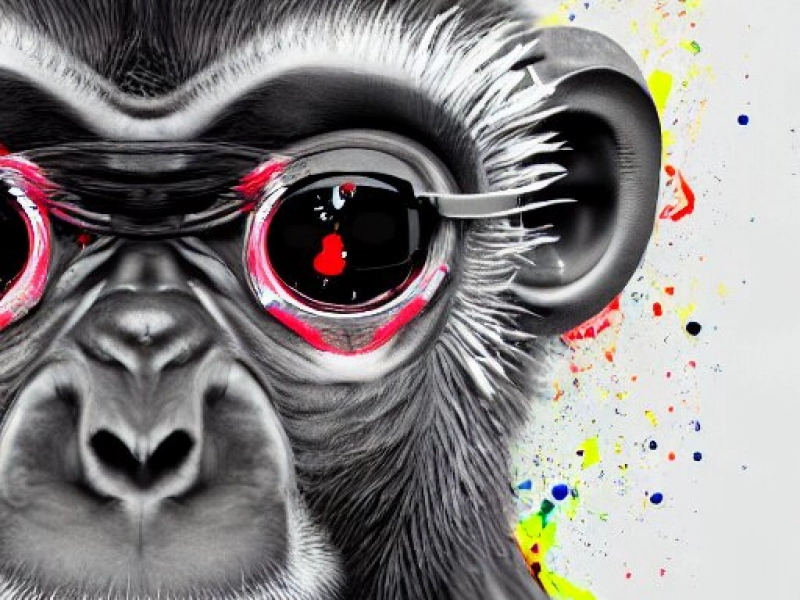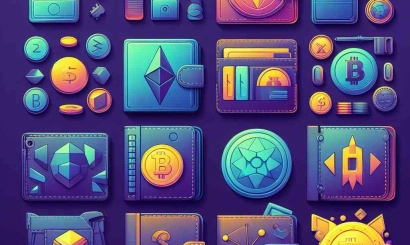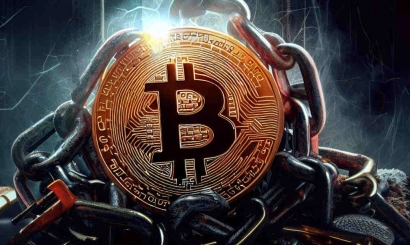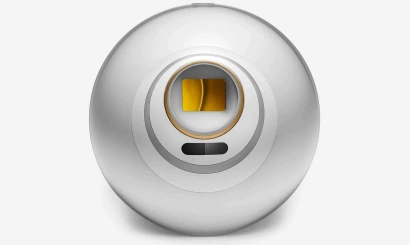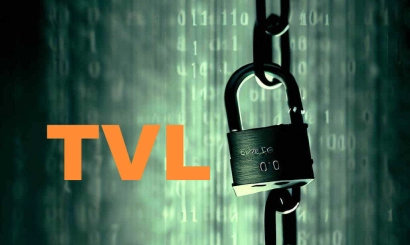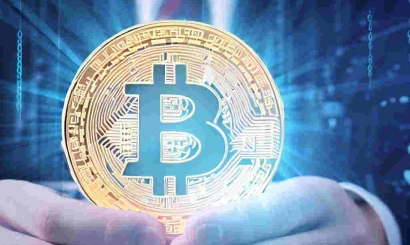In 2021, the crypto industry witnessed an unprecedented surge in NFT token transactions. The market size expanded by more than 100 times within a year. While the total volume of NFT token transactions was less than $95 million throughout 2020, it reached nearly $25 billion by the end of 2021. It's no surprise that NFTs are currently in the limelight, with journalists and bloggers discussing them and digital art dealers and investors actively utilizing them. But what exactly is this technology? What are the advantages and disadvantages of NFTs?
Understanding NFTs in simple terms
To begin discussing NFTs, we need to decipher the acronym itself. NFT stands for Non-Fungible Token, where "Fungible" is an economic term referring to identical goods that are easily interchangeable. When applied to tokens, "Non-Fungible" signifies their uniqueness and non-interchangeability.
To better understand NFTs, let's consider a concrete example. Imagine you visit a sports store to purchase a soccer ball. In the relevant section, you find dozens of identical sports equipment. Regardless of which one you buy, you obtain the desired product that can be replaced with an identical one. However, next to the regular balls, there's one signed by Cristiano Ronaldo. This autograph makes the ball unique and irreplaceable.
NFTs work similarly – they are part of a blockchain (a token) that holds an immutable record of the purchase and sale history of a unique, inimitable digital object, along with royalties and ownership restrictions. In other words, an NFT token is not the object being bought or sold, but rather a digital certificate, like an excerpt from the Uniform State Register, containing the entire history of ownership rights to the digital object.
The origin of NFTs
There is some debate surrounding the exact origins of NFT technology. While it's evident that it emerged in its familiar form in 2017, the question remains: where did it all begin? In an attempt to answer this, crypto-archaeologists discovered the Terra Nullius smart contract, created in 2015, which allowed for the creation of tokens containing text messages with ordinal numbers. However, at that time, Terra Nullius did not support the buying and selling of tokens.
The next significant milestone in NFT history was the game Blockplots, where the entire playing field was divided into numerous small areas, each corresponding to a unique token. The gameplay included the ability to transfer plot ownership between users, with the transaction history stored in a blockchain. As a result, the developers of Blockplots, launched in late October 2015, can be considered the creators of the first fully functional NFT.
However, the first truly popular NFT project was CryptoKitties – a game featuring a wide variety of digital cats, each associated with a unique token. All processes in CryptoKitties, including the entire history of the feline world's life and development, are stored in a blockchain. The game's popularity peaked in 2017. Although it seemed to fade into obscurity a year later, the renewed interest in NFTs in 2021 breathed new life into the project.
The beginning of 2018 saw efforts to establish a unified NFT standard. Several development teams were involved, but the most successful result was achieved by William Entricken, who created ERC-721, completed on June 6, 2018. ERC-721 is a relatively simple smart contract standard based on Solidity that maps unique identifiers (each representing a single asset) to addresses representing the owners of those identifiers. Additionally, ERC-721 enables the transfer of these assets using the transferFrom method.
ERC-1155, an evolution of the ERC-721 standard, introduced the concept of semi-fungibility to the world of NFTs. In this class, identifiers represent asset classes rather than individual assets, which is highly convenient in certain situations. For example, using ERC-1155, transferring 100 units of a resource from one player to another requires only a single transaction, whereas ERC-721 would necessitate 100 separate transactions. However, the efficiency of ERC-1155 comes with a drawback: working with asset classes eliminates the ability to track individual items.
Applications of NFTs
The hype surrounding NFTs is justified. Gamers were the first to create a strong demand for the transfer of digital property rights, considering that almost any digital object can be tokenized. NFTs have enabled them to buy and sell various items and objects existing in game worlds, with or without the consent of developers.
Another significant group of NFT enthusiasts is card collectors. They are willing to spend tens or hundreds of thousands of dollars on rare cards featuring soccer players, hockey players, baseball players, and more. Publishing houses also issue collectible cards based on comic books, cartoons, and even games. However, the number of physical cards is limited, and there are never enough to satisfy all collectors. NFTs have addressed this issue by allowing collectors to own, if not a physical card, at least a unique digital representation of it. The cost? Substantial. For instance, one of the most expensive acquisitions in this market is the NFT of a rare Pikachu Pokémon card, purchased for $250,000 in 2020.
The digitalization and tokenization of art have been actively growing since 2021. While some view this as a rapid devaluation of culture, others see it as an equally rapid renaissance. Regardless of one's perspective, digitalization has sparked a renewed interest in art, even among those who previously showed no interest. Although the quality of digital works is debatable, the entry of serious buyers into the NFT market has attracted professional artists, sculptors, and photographers, who are now showcasing highly artistic content on NFT marketplaces.
Music can also be represented as a non-fungible token. Eminem, Snoop Dogg, and many other famous artists have already digitized and tokenized some of their works. In the film industry, NFTs are becoming an effective tool for promoting new movies. Producers can generate additional advertising and profit by selling official NFT posters, rare behind-the-scenes footage, or scenes not included in the final cut alongside the film's release. Furthermore, non-fungible tokens can be used to record the transfer of ownership for both digital and physical assets.
NFTs have the potential to become the foundation for the existence of metaverses – digital environments built on blockchain technology that offer unlimited possibilities for social and economic interaction between users, including the use of augmented and virtual reality technologies. NFT tokens play a crucial role as a tool for cross-chain transactions and as a guarantor of property rights for all objects in the digital world.
Creating and selling NFTs
Today, the process of tokenizing digital objects has been simplified to the extreme. The quickest way is to use one of the largest NFT marketplaces, such as OpenSea (the largest), Rarible, or Mintable. Each of these platforms combines the features of a marketplace and an NFT minting platform.
To create an NFT token, users need a software wallet and a file containing the digital content. The subsequent steps resemble creating a digital album: a gallery is created, files are uploaded with titles and descriptions, and that's it. To create an NFT token, users simply need to click the "Create" button. The marketplace then generates the token and lists it for sale. Some marketplaces complete this process almost instantly, while others may take longer due to verification. Marketplaces also differ in their approach to fees: some charge buyers, while others charge sellers, and the fee amounts can vary significantly (from tenths of a percent to 10-15 percent of the transaction amount).
Challenges facing NFTs
Like any technology, NFTs have their drawbacks. One of the main criticisms leveled against those involved in NFT token circulation is environmental damage and energy misuse. The logic is straightforward: information about all NFT token transactions is stored in the blockchain on which the token is issued. Creating each new record consumes an average of 30 to 35 kW of electricity. However, this criticism of energy efficiency only applies to blockchains using the Proof-of-Work (PoW) protocol. It's worth noting that Ethereum, one of the most popular blockchains, recently switched to the Proof-of-Stake (PoS) protocol.
NFTs face other challenges, primarily of a technical and legal nature. Firstly, even if you own a non-fungible token proving ownership of a particular digital art object, any internet user can find and download the same image from the network. The only way to combat this is through encryption, which requires individual effort and resources.
The legal issue with NFTs is that the token verification mechanisms in NFT marketplaces are imperfect and do not eliminate the risk of fraud. An intruder can take any image they like from the internet, tokenize it, and put it up for sale, violating copyrights. Unfortunately, artists often find their works on NFT marketplaces, even if they have never engaged in the digitalization of their art.
NFT technology also faces problems related to security and storage. No matter how secure the servers storing the tokens are, they remain vulnerable to hacker attacks. The situation is even more complicated with digital assets: the associated files are not stored in the blockchain but on regular servers. If a hacker attack or any other action corrupts or deletes the files, the NFT token owner will only possess a unique digital key no longer associated with any digital object.
Earning potential with NFTs
The primary way to earn money from NFTs is by selling digitized creative output. This is a growing market, with works of varying quality in demand. The vast majority of them cost buyers a few dollars, but in this case, the desired result can be achieved not only through the quality of the work but also through quantity. For a professional artist, creating and digitizing 15 to 20 small paintings a day would not be too challenging.
However, there is significant money to be made in this market. A unique "Stay Free" token containing documents about the mass surveillance of US citizens by the National Security Agency, authored by Edward Snowden, sold for $5.4 million. "Crossroads," a work by American digital artist Mike Winkelmann (known as Beeple), depicting Donald Trump's defeat in the presidential election, was bought for $6.6 million. The currently most expensive piece of NFT art also belongs to Beeple: on March 11, 2021, Christie's auction house sold his painting titled "Everydays: The First 5000 Days" for more than $69 million. The work is a JPEG file, a collage of 5,000 of the artist's works created over the past few years.
However, selling one's own digital works is not the only way to earn money with NFTs. Investing in the work of successful artists and well-known individuals is also attractive. Additionally, participating in airdrops – the distribution of free tokens – can yield substantial earnings. For example, Bored Ape Yacht Club has already held two such campaigns. The tokens distributed during these events are currently worth $1,300 to $1,400 and continue to appreciate.
In conclusion, NFT is an interesting, promising, and rapidly developing technology that has found applications in various aspects of our lives. It has opened the door for tens, if not hundreds of thousands of people to generate significant and consistent income.
- Cryptocurrencies in Islam: Halal or Haram?
- Platforms for issuing tokens: Where to mint coins for ICOs?
- Hybrid cryptocurrency exchanges: what is HEX?
- What is cryptojacking and how to escape from it?
- How to Know Mining: Key Terms
- The best software miners for a quick start
- Creating a blockchain with your own hands in Python
- What are parachains?
- NBMiner for Linux and Windows
- What is Bitcoin?
- How to assemble a rig for mining with your own hands

